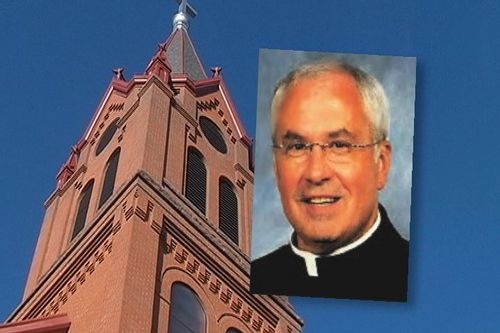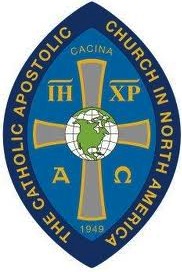Covering Catholics who are more like 'Catholics'
 GetReligion readers may recall the case of young Lennon Cihak, who -- at the very least -- told the Rev. Gary LaMoine (in photo) that he disagreed with the Catholic Church's teachings on sexual ethics and marriage. Thus, the priest -- after long talks with the family -- decided that the young man should not be confirmed as a grown-up, loyal Catholic believer. Now, it seems that there has been another news development in that headline-grabbing case. This update is, frankly, not much of a surprise.
GetReligion readers may recall the case of young Lennon Cihak, who -- at the very least -- told the Rev. Gary LaMoine (in photo) that he disagreed with the Catholic Church's teachings on sexual ethics and marriage. Thus, the priest -- after long talks with the family -- decided that the young man should not be confirmed as a grown-up, loyal Catholic believer. Now, it seems that there has been another news development in that headline-grabbing case. This update is, frankly, not much of a surprise.
DETROIT LAKES, Minn. -- A nontraditional Catholic organization has offered to confirm a Barnesville 17-year-old after he was denied confirmation because of his support for gay marriage.
“I did speak to the father of the young man and let them know the Evangelical Catholic Diocese of the Northwest would be happy to confirm the young man if he is interested in doing so,” said Bishop James Wilkowski, of Chicago.
The family of Lennon Cihak says the Rev. Gary LaMoine of Assumption Catholic Church in Barnesville wouldn’t confirm the boy after learning from a photo on Lennon’s Facebook page that he supports gay marriage. Lennon’s parents, Shana and Doug, who have lived in Barnesville their entire lives and have always been members of Assumption, say they have also been denied Holy Communion there since the dustup.
Actually, that is a very sketchy version of the basic facts, especially the statement that the priest's decision was based on the Facebook photo alone, or even the photo and the teen's statement opposing Catholic teachings on marriage.
But nevermind, that's not what this post is about.
What, pray tell, is the Evangelical Catholic Church? Here is what the story offers:
Wilkowski describes the Evangelical Catholic Church as “separate but equal” to the traditional Roman Catholic Church. “We are a validly consecrated Catholic faith community,” he said. “We do have some pastoral differences between the Roman Church and ours.”
One difference is that priests can marry. Another is that women can become priests. The church also offers a quicker path to annulments after a divorce -- a process that Wilkowski said can take up to 10 years in the traditional church, leaving members in limbo.
The Evangelical Catholic Church is also “non-discriminatory,” when it comes to the sexual orientation of its members. ... The church was founded in 1997, he said.
So how many parishes does this church have? How many members, in this separate-but-equal -- in comparison to Rome -- jurisdiction? Frankly, it's hard to tell, but it is clear that this is another tiny splinter on the very complex tree of the Old Catholic universe. This is the first I have ever heard of this body and I've been covering that alternative-Catholic world for decades. These tiny church bodies have a way of evolving and morphing.
So is this enough information about this small, alternative church, in a basic news story? Should journalists let a bishop of a church of this kind simply make these kinds of statements and that is that, with no response from Catholic leaders?
To be blunt: No way.
This story needed a few more factual sentences and some kind of on-the-record Catholic response.
So is it possible to accurately describe the Old Catholic world in a daily newspaper? A GetReligion reader sent us an example of a story that at least made the attempt. Patrick Krisak said: "I thought this was interesting and well done. I have a few more questions about the council, the other churches on it, and what the local Catholics think of the whole thing, but I was pleasantly surprised to find much more here than I expected."
The news hook, in this story from the Catskills in New York, is that a local interfaith groups has been reluctant to admit one of these alternative Old Catholic parishes. Thus, readers learn:
Bishop Francisco Betancourt, a founding pastor of the independent Catholic Holy Innocents church in Halcottsville, said that his church has been trying to join the Margaretville Interfaith Council for 12 years, ever since the church was established. Throughout that time, Betancourt said, his efforts have been met with a resounding silence -- a response that was never quite clear enough to be 'no,' but never a welcoming 'yes.'
The reason his church has not been welcomed, Betancourt says, is Holy Innocents' willingness to perform same-sex marriage, an issue that Interfaith Council leaders acknowledge is deeply controversial among their members.
 Now, this is a rather long news story and, thus, there is room for more detail. Yes, the usual Brazilian bishops play a starring role. While I am sure that Catholics loyal to Rome will be able to pick holes in this historical narrative, it's still nice to see a newsroom make the attempt to provide some background:
Now, this is a rather long news story and, thus, there is room for more detail. Yes, the usual Brazilian bishops play a starring role. While I am sure that Catholics loyal to Rome will be able to pick holes in this historical narrative, it's still nice to see a newsroom make the attempt to provide some background:
Holy Innocents is one of hundreds of independent Catholic churches around the world that trace their lineage of ordained priests in a direct line of succession back to the Roman Catholic hierarchy, but have severed their relationship with the Vatican. Some are more conservative than the Vatican itself; others are theologically liberal.
Holy Innocents is a member of the Catholic Apostolic Church In North America (CACINA), an offshoot of a Brazilian church founded in the 1940s by an excommunicated Roman Catholic bishop. Unlike the Roman Catholic church, CACINA practices the ordination of women and married people, admits same-sex couples to the sacrament of marriage, and allows divorced parishoners to remarry and receive the Eucharist.
Betancourt said that has been told by his parishoners that local Catholics have challenged the legitimacy of Holy Innocents as a church, and that he has confronted the priest of Margaretville's Roman Catholic Sacred Heart parish, Father Paul Catena, about the issue.
Catena could not be reached for comment. Sacred Heart's representative to the Interfaith Council, Dick Tucker, declined to speak with the Watershed Post.
Once again, a few crisp statistics about the Catholic Apostolic Church In North America -- number of members, the number of parishes (there appear to be 10 parishes in all) -- would help.
Still, this was a nice try. A bit of progress!